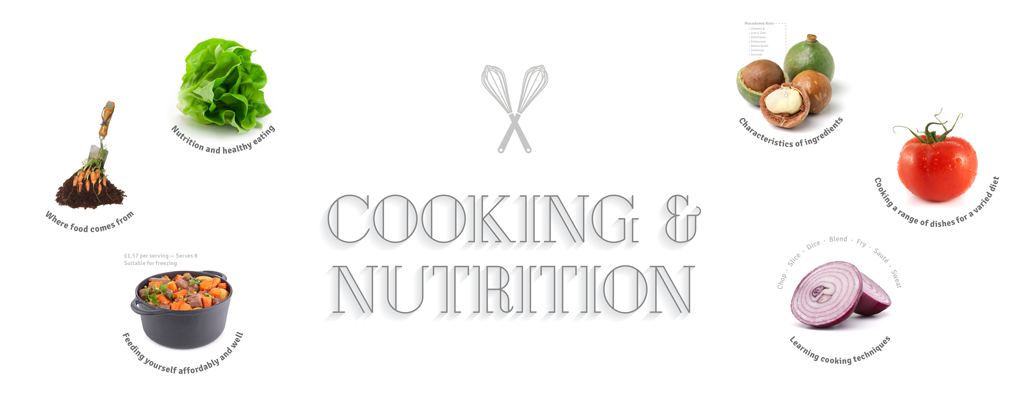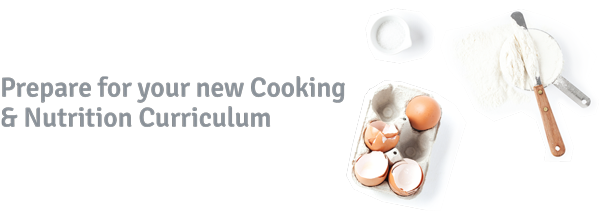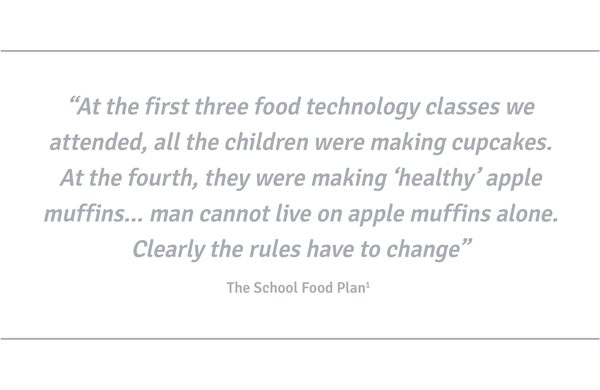Great excitement has built among food teachers as they celebrate food teaching becoming compulsory in schools in September 2014.
This has been long awaited by some, who have found the process quite frustrating, as it began in 2007 during Ed Balls’ administration, only to be suspended as a new curriculum review began.
From 2014 onwards, all schools that follow the National Curriculum will have to teach food as part of D&T, including a new ‘cooking and nutrition’ programme of study in KS1, 2 and 3. The reasons for this are:
• To acknowledge the importance of food alongside other materials used for designing and making.
• To address the obesity crisis.
Our food teachers lead the way in addressing young people’s understanding of nutrition and are centrally placed to support behaviour change and offer practical ways to adopt a healthier lifestyle.
The government has focused on a whole-school plan which is central to addressing school food (in the curriculum and the food service). This is formalised in the School Food Plan1, Chapter 2 of which outlines compulsory cooking in schools and equipment for schools.
At KS1, 2 and 3, the D&T programmes of study are slimmed down and there is very little detail about what specifically should be taught, so teachers are encouraged to look to the progression framework provided by the Design & Technology Association2 and the recently updated UK Core Food Competences3 to understand the detail. Progression is cumulative, and pupils will need to revisit concepts from earlier key stages.
In addition, pupils should bring their knowledge and skills together and use them to develop recipes and dishes that are suitable for a specific person or situation. When designing with food, modifying recipes to meet nutritional criteria is a key skill and teachers are encouraged to leave other aspects of designing, such as sketching and drawing, to their D&T colleagues working in other materials.
Similarly Oxbridge looks closely at context — a student applying from a school or area that has little or no historical success with applications will jump through lower hoops than a student from a school with a long established Oxbridge preparation programme2.
The designing and making section of the programme of study has home, leisure, health, agriculture and industry listed as contexts for designing and making, which opens up many opportunities for teaching about growing, farming, product development, food science, catering and so on, as well as for teaching pupils to make meals for themselves and their families.
There is a lot of discussion about the acceptable range of cooking techniques and recipes that demonstrate them – we advise ensuring there is sufficient time for practical cooking in the scheme of work. Pupils should cook things that:
• are appropriate to their culture and values,
• meet nutritional guidelines,
• help them to feed themselves within a budget, and
• are useful to them now and in later life.
There is no statutory number of hours set aside in the timetable for cooking, although there is an expectation that this will be regular, probably every week, with a focus on healthy recipes and practical learning and less paper-based designing or research activities.
For many secondary schools, this is current practice and they will not need to change their focus, but they may need to change their assessment strategies to assess the knowledge and skills in the cooking and nutrition section as well as the designing and making process. The 2008 level descriptions will need extensive revision for use in food teaching.
Unfortunately, for some teachers, high-quality lessons are still prevented by the same issues identified by Ofsted in their last detailed Food Technology report4 in 2006. These issues include food’s low status in schools, lack of technician time, insufficient budget for ingredients, and class sizes that exceed health and safety limits facing very short practical lessons.
School Food Champions
Those schools and senior management teams that recognise the contribution of food teaching to the whole school and pupils’ wellbeing will score well with Ofsted. Many schools recognise how this can positively impact upon attainment in all subjects, as well as improved behaviour.
These schools have resolved some issues that have held back high-quality teaching in the past by implementing changes such as:
• Improving food’s low status in the school by adopting a whole-school food approach.
• Employing technicians so that teachers can focus on teaching and avoid low-level tasks such as oven cleaning (we don’t ask PE teachers to clean the changing rooms!)
• Having a school policy on the provision of ingredients and using Pupil Premium for those pupils who cannot afford to join in the lesson.
• Offering longer lessons for practical work, so that pupils are more often able to make things from scratch and use fresh ingredients.
In an important link between food lessons and the quality of the food served for school lunch, the D&T Association (in partnership with the British Nutrition Foundation and Eagle Services Solutions) has recently launched a School Food Champion programme. This Department for Education programme makes pupils responsible for redesigning their school lunches to meet the new Food Standards and to produce recipes they will want to eat for lunch. SR
• Link to whole-school Food Plan
• Teach about nutrition in every lesson
• Link with meal choices, particularly school meal
choices and healthier lifestyles
• Map progression from KS1 to 2 to 3 and consider the progression route to your KS4 exam offering (D&T Food, Catering or Food and Nutrition)
• Review all recipes against nutritional guidelines, taking
into account the culture(s) and needs of the school population
• Provide the opportunity to learn at least 10 new
cooking skills and 20 recipes
• Include food science investigations and explanations so
that pupils understand how ingredients function
• Create opportunities to work with a local restaurant,
caterer or product designer
• Ask pupils to design and create using their own recipes
• Involve pupils in improving the school lunch menus on
offer, to increase lunch take-up
• Link with PSHE, and science teaching on nutrition, link
with other food activities in the school
• Write standards (level descriptions) based on what you
expect your pupils to be able to know and do by the end of the year/key stage as a result of your teaching. Choose appropriate ways to assess this, and track progress.




